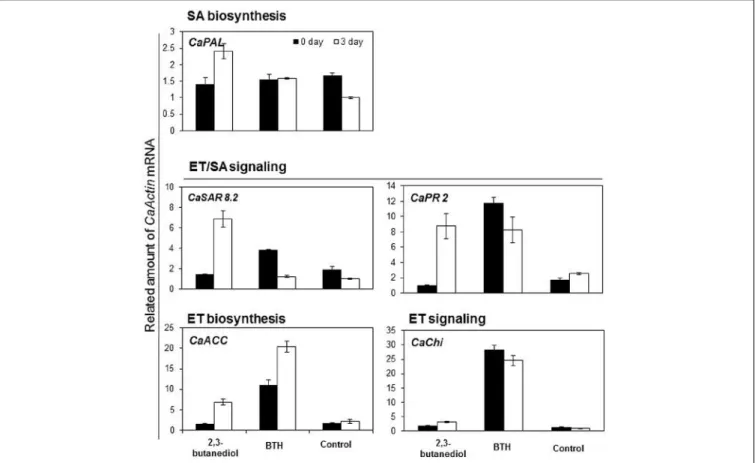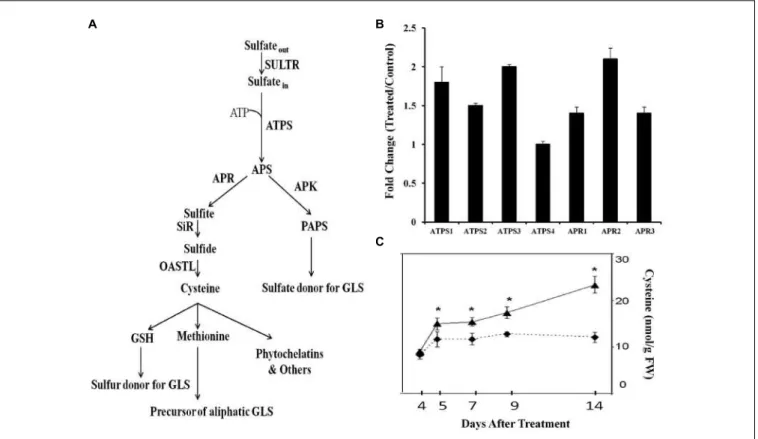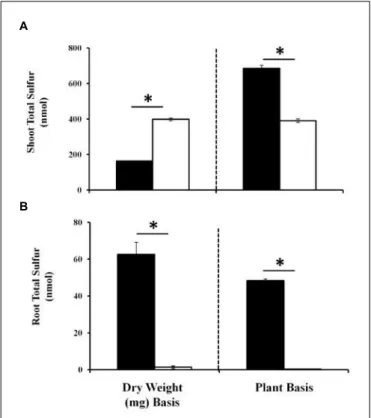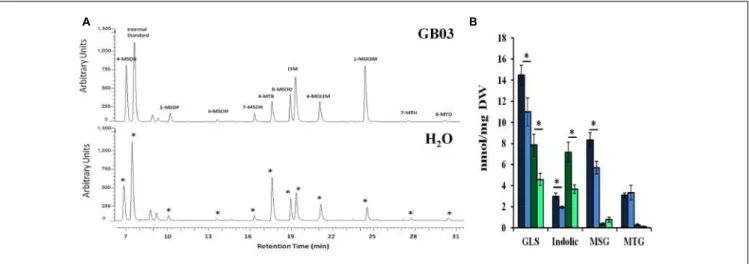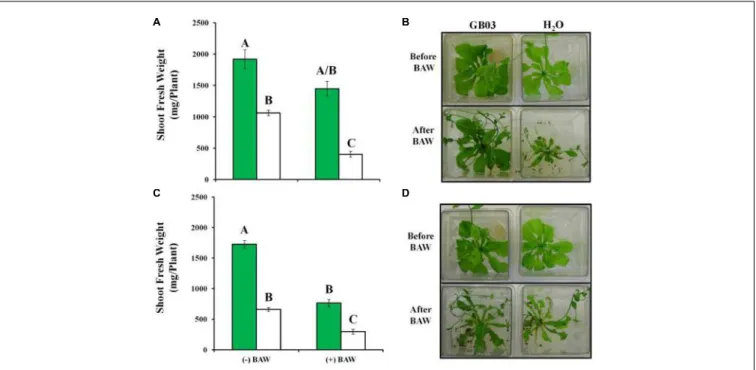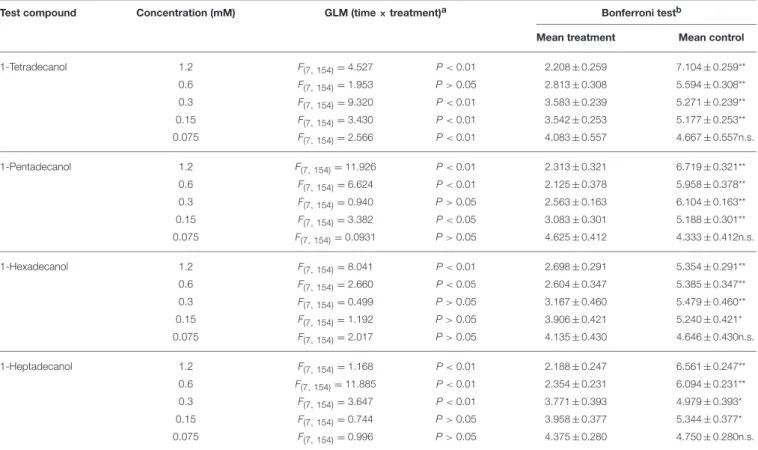Blight, caused by the oomycete Phytophthora infestans, is the most serious potato disease (Nowicki et al., 2012). Nevertheless, it is also a human pathogen, a trait that threatens its exploitation in agriculture (Deredjian et al., 2014).
OMICS
The bacterium and its fermented products showed induction of SA available for powdery mildew biocontrol through systemic resistance.
OUTLOOK AND FUTURE CHALLENGES
AUTHOR CONTRIBUTIONS
The nature of 2,3-butanediol on bacterial cells was assessed and the effect of the molecule on root colonization was also determined. Exudates from plant roots pretreated with the 2,3-butanediol overexpressor were used to challenge various microorganisms.
INTRODUCTION
MATERIALS AND METHODS
Four days after transplanting, 5 ml of 2,3-butanediol (1 mM or 1 µM) was drenched onto the root system. A 96-well based assay was used to determine the effects of root exudates on bacterial growth.B.
RESULTS
Upon exposure to horseradish root exudate induced by 2,3-butanediol treatment, the growth of strains 168 (wild type) and 2,3-B(++) (overexpression mutant) was less inhibited than the growth of 2,3- B(−) (null mutant; Figure 3C). Root exudates of 2,3-butanediol-treated pepper were therefore able to inhibit the growth of the bacterial pathogen GMI1000.
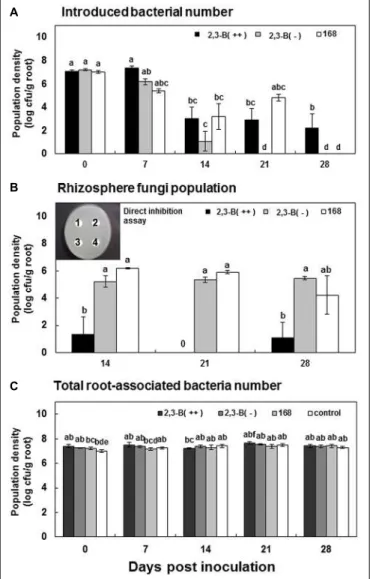
DISCUSSION
The direct effect of 2,3-butanediol on horseradish was demonstrated by changes in gene expression. Under these conditions, 2,3-butanediol produced an anti-inflammatory effect through inhibition of NF-κB signaling (Hsieh et al., 2007).
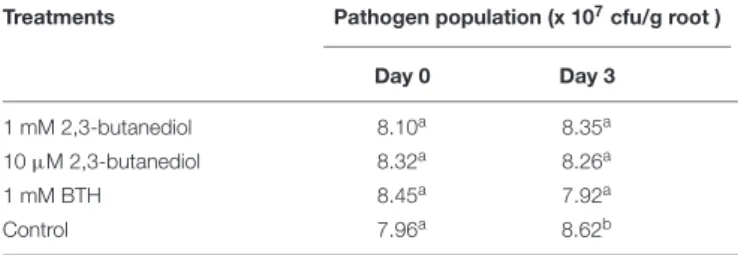
ACKNOWLEDGMENTS
Sulfur may also be present in chloroplastic membrane lipids, as well as in certain coenzymes/vitamins (Falk et al., 2007). From an ecological context, sulfur metabolites function in plant defenses against pathogens and herbivores (Falk et al., 2007).
MATERIALS AND METHODS Plant Material and Treatments
For example, ethylene signaling is operative in vivoPGPR signaling but not with in vitro growth promotion (Ryu et al., 2005). Alternatively, since the genome sequence of GB03 has recently been identified (Choi et al., 2014), different GB03 mutant lines are tested.
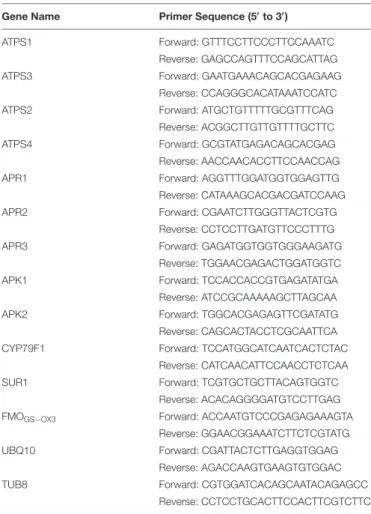
FUNDING
For humans, isothiocyanates derived from the hydrolysis of MSG are potent cancer preventive agents (Hansen et al., 2007; Li et al., 2008). MA designed the project, performed experiments, collected data, analyzed results and wrote the study; RN performed experiments, collected data and analyzed results; XX designed.
SUPPLEMENTARY MATERIAL
Natural variation in the ATPS1 isoform of ATP sulfurylase contributes to the control of sulfate levels in Arabidopsis.Plant Physiol. Long-term growth promotion in Arabidopsis with long-term exposure to the beneficial soil bacterium Bacillus subtilis (GB03). Plant Signal.
MATERIALS AND METHODS Fungal Strain
Chitinase, glucanase and protease activity of the Lysobacter strains were tested as described in De Bruijn et al. Several biological control agents not only suppress disease but also promote plant growth (Johansson et al., 2003).
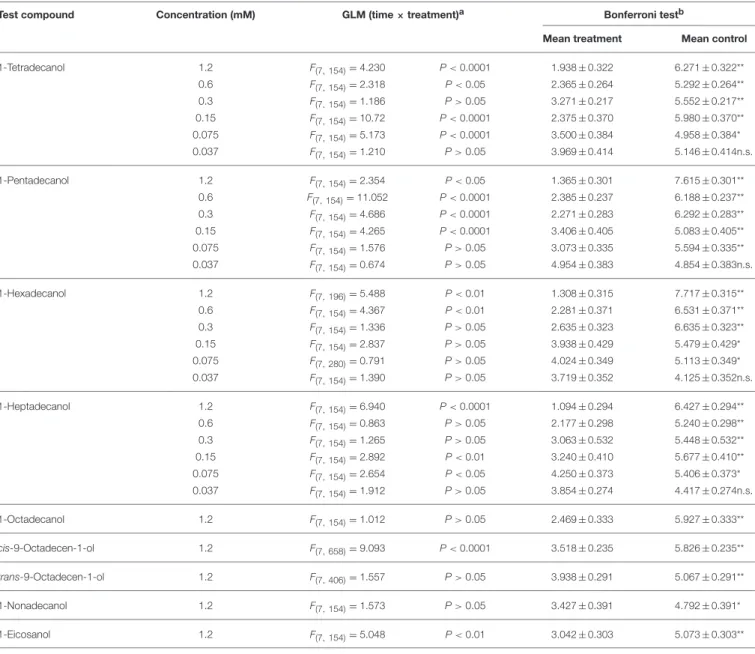
MATERIALS AND METHODS Chitin Soil Amendment
Pooled analysis of these five species showed that the relative abundance of Gram-negative bacteria increased significantly with chitin treatment. In contrast, the relative abundance of Gram-positive bacteria was not significantly different from the control.
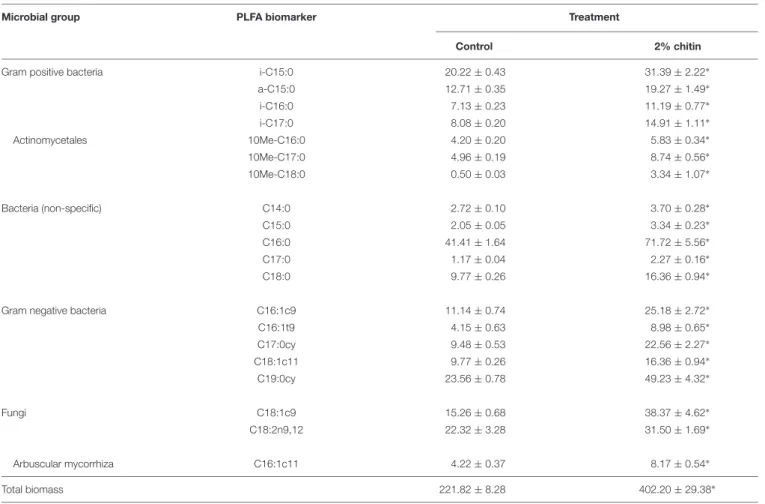
CONCLUSION
First, 250 mg of rhizosphere soil was taken for amplicon sequencing as defined by Lundberg et al. Second, amplicon sequencing is known to provide reliable information on microbial taxonomy, especially for higher order identification (Poretsky et al., 2014).
ACKNOWLEDGMENT
Other studies have reported the positive effect of applying arbuscular mycorrhizal fungi to soil and the biocontrol activity on avocado (Hass and Menge, 1990; González-Cortés et al., 2012). The use of composted almond shells as mulch led to an improvement in the bacterial composition and activities of the soil communities compared to the observed suppression (Bonilla et al., 2015).
MATERIALS AND METHODS Field of Study
Three of the purified test DNA composite samples (800 ng per sample) from the two different soil types studied (AS and CT) were sent to Glomics Inc (Norman, Oklahoma) for sequencing analysis (Tu et al., 2014). The analysis of the most abundant group of microorganisms (Ascomycota) revealed that in the AS soil samples an increase of the Dothideomycetes class was observed (from 40% in CT to 54% in AS).
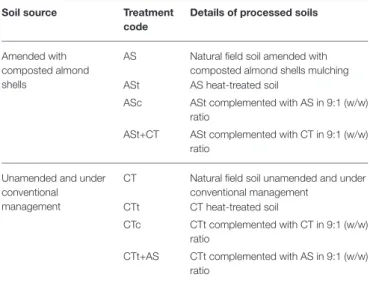
MATERIALS AND METHODS Sites
The soil moisture in each column was the same (6 or 18%) as that of the soil in the inverted Petri dish. Proteomic analysis of the host response in the bursa of Fabricius of chickens infected with Marek's disease virus.
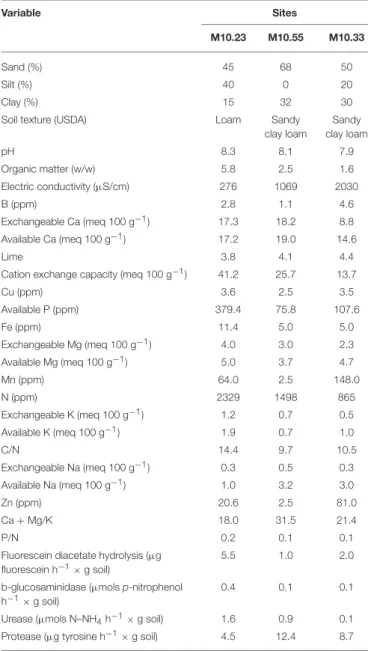
MATERIALS AND METHODS Chemicals and Culture Media
Numbers indicate the average growth of 3–4 replicates in percentage of the control (inhibition in red, stimulation in green). A gradual reduction in the population of the introduced organism in soil/field has been documented in several cases (van Veen et al., 1997; Matos et al., 2005; Kröber et al., 2014).
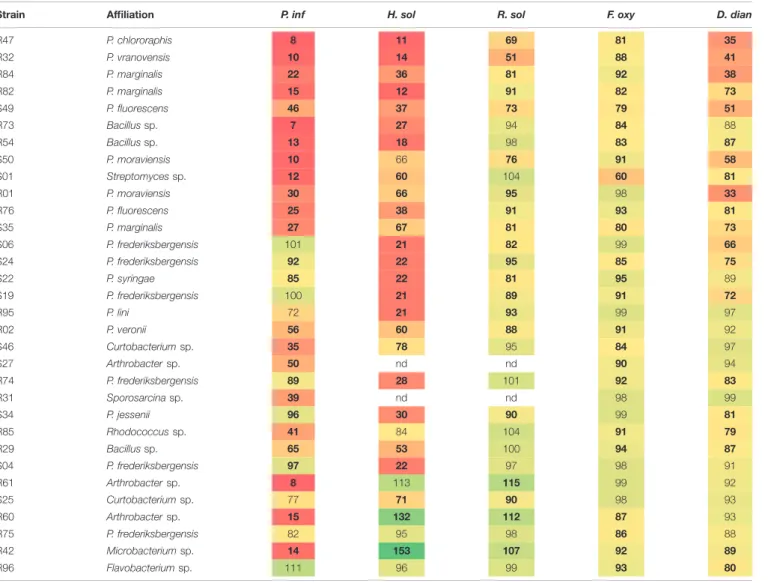
MATERIALS AND METHODS Endophytic Bacterial Strain
Set-I was applied with 5 ml of SDW while group-II was spiked with 5 ml of supernatant from the soil mixture suspended in SDW (1 g per 10 ml). Pauan and non-Paucfu were assessed by NA after 48 h. Effect of the biocontrol strain Bacillus amyloliquefaciens FZB42 on the microbial community in the lettuce rhizosphere under field conditions analyzed by whole metagenome sequencing.
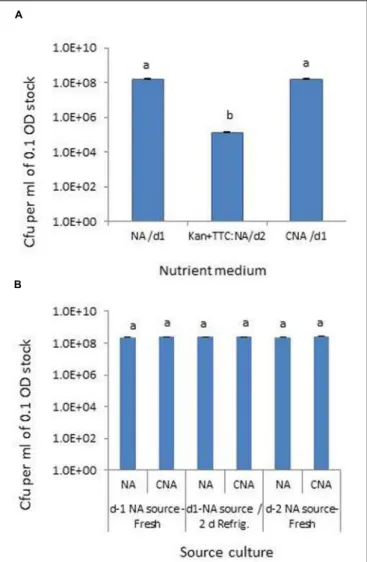
Recent History of Weed Control
The unprecedented efficiency and ease of use associated with this weed control system led to its rapid adoption throughout much of the world, in many cases completely replacing previous weed control practices (Beckie , 2011; Green and Owen, 2011). For this reason, the continuous development of new weed control methods is essential for the continued maintenance of agricultural yields.
Biological Control of Weeds: Introduction and Scope of Review
These developments are necessary both to control weed populations that are resistant to currently available modes of action, as well as to diversify weed control platforms in order to slow the emergence of new resistance traits. Biological weed control strategies may address this need and provide new modes of action that will inhibit the growth of weeds resistant to more commonly used herbicides.
Biological Control of Weeds Using Fungi
Another strain of this species, PFC 2139, was registered with the EPA under the product name Chontrol Paste in 2004 (EPA Reg. Another fungus, Puccinia thlaspeos, was registered with the EPA in 2002 under the product name Woad Warrior for control of Dyer's weevil (Isatis tinctoria) (EPA Registration Number 73417-1).
Biological Control of Weeds Using Bacteria
The activity of this species is specific to Poa annu and Poa attenuata, and has not been reported to affect other grass species tested (Imaizumi et al., 1997). Briefly, Xcccan colonizes the xylem of the host plant and uses this pathway to spread throughout the organism (Duge de Bernonville et al., 2014).
Biological Control of Weeds Using Viruses
The herbicidal compounds produced by this species, referred to as pseudophomin A and B, were characterized by a combination of serial chromatography, high performance liquid chromatography (HPLC), thin layer chromatography (TLC), chemical degradation and X-ray crystallography (Quail et al., 2002; Pedras et al., 2003). However, the complete genome sequence of this strain has been published (Dumonceaux et al., 2014) and a detailed projection of the costs and technical requirements for the mass production of this biocontrol agent has been reported (Mupondwa et al., 2015).
Real World Factors that Affect the Efficacy of Bioherbicides
Similar requirements have been suggested by Auld et al. 1990), who observed that successful infection of spiny thistle (Xanthium spinosum) by the biological weed control agent, Colletotrichum orbiculare, may be conditioned by elevated humidity. However, apparent latent periods in the life cycle of candidate species for biological control of weeds have occasionally been reported (Romero et al., 2001; Paynter et al., 2006), and it is possible that quorum sensing effects may explain these cases of asymptomatic infection.
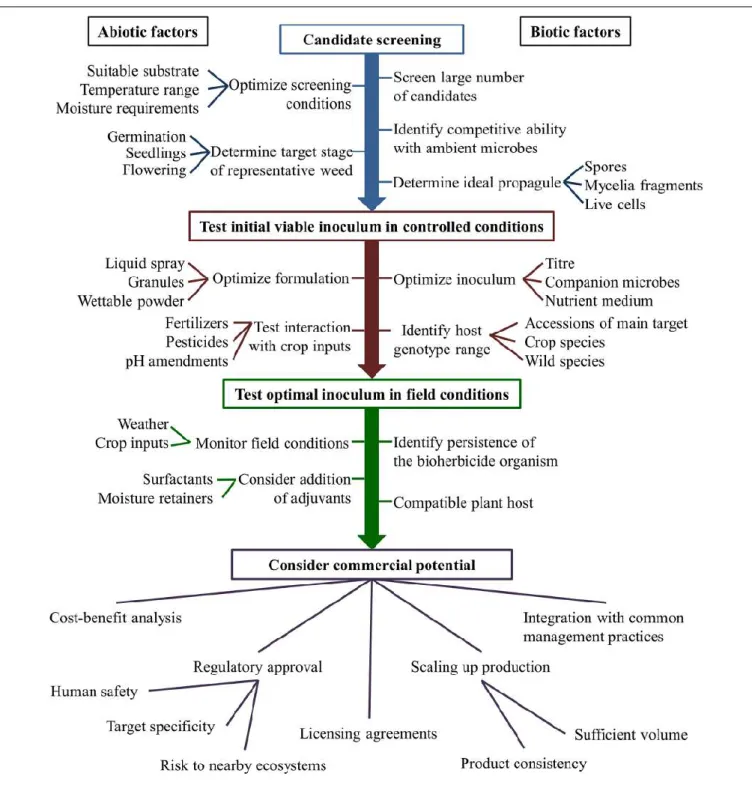
Challenges in Commercialization
This parameter will vary for any given biological control candidate species and therefore temperature and humidity must be tracked throughout any efficacy trials involving biological weed control agents. The effect of bacterial and fungal population densities can in some cases determine the behavior of these species, and in some cases influence whether a pathogen is virulent or latent (Bowden et al., 2013; Lu et al., 2014).
Future Directions Mechanism of Action
For example, most plant species form relationships with a variety of microbes, referred to as endophytes, which colonize the plant's internal environment without causing disease (Duan et al., 2013; Ali et al., 2014). It has been reported that some plant-inhabiting microbes will express host-specific behaviors, acting as an endophyte in some plant species but as a pathogen in another (Gomes et al., 2013).
Conclusion
Most of the studies discussed in this review used microbes originally isolated from diseased individuals in the population of a weed species (Kennedy et al., 1991; Neumann and Boland, 1999; Ghosheh, 2005). There is evidence that endophytes may play a role in nutrient accumulation, drought tolerance and disease resistance (Compant et al., 2010; Johnston-Monje and Raizada, 2011; Mousa and Raizada, 2013).
Author Contributions
However, there are additional ecological niches from which potential biological weed control candidates can be discovered. Growth-promoting endophytes have been shown to reduce weed populations in pastures by inoculating the desired grass species, enabling them to compete more effectively with weeds (Saikkonen et al., 2013; Vazquez-de-Aldana et al., 2013).
Acknowledgments
Given the degree of taxonomic diversity among microbes, there are opportunities to use other genera as bioherbicides in the future. Endophyte-based weed control may have unique advantages over the use of pathogens, such as improved ability of candidate microbes to.
Since its first description (Krebs et al., 1998), more than 70 articles dealing with FZB42 have been published. These strains have been extremely useful for studying root colonization after bacterial inoculation (Fan et al., 2011;
PGPR BACILLI ENGINEERED FOR ENHANCED EFFICIENCY
Selected plant-associated Bacillusstrainsemit mVOCs consisting of 2,3-butanediol and acetoin that can elicit plant defenses (Ryu et al., 2004). Phosphorylated DegU (DegU-P) activates its own promoter and is degraded by the protease ClpCP (Ishii et al., 2013).
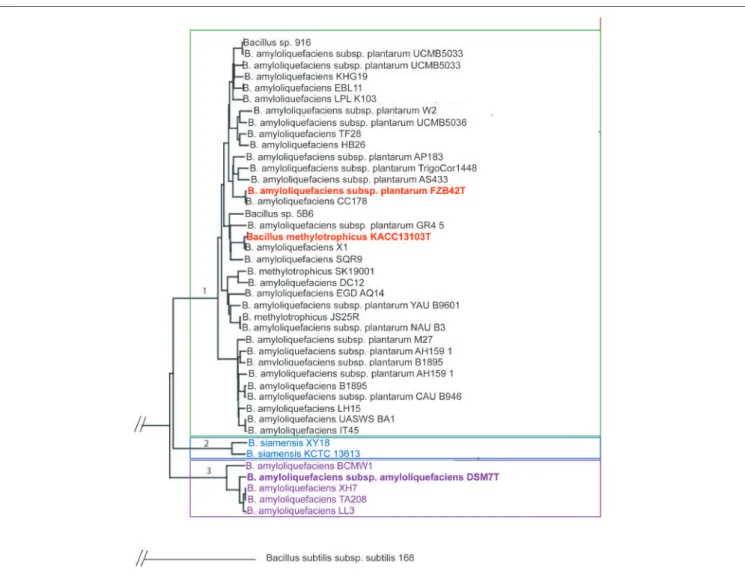
PGPR BACILLI ENGINEERED FOR ENHANCED EFFICIENCY IN
BIOCONTROL
RECONSTITUTION OF PRODUCT PRODUCTION
MODIFICATION OF GLOBAL REGULATOR
This is possible since the expression of the ilv-leu operon is regulated by CodY in the presence of branched-chain amino acids (Ratnayake-Lecamwasam et al., 2001). Supernatant of the resulting recombinant strain FZBHarpin caused a hypersensitive response (HR) reaction on tobacco leaves, suggesting that biologically active Harpin protein is secreted into the medium.
MARKER REMOVAL STRATEGIES IN Bacillus
However, before using the FZB42Harpin recombinant strain in field trials, the two resistance markers flanking the crelox recombinase recognition sites must be removed by site-directed recombination. Removal of selectable marker genes is performed by specific Cre recombinase at SSR recognition sites.
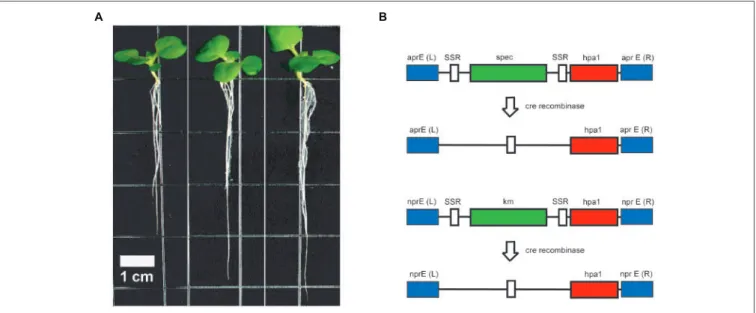
OUTLOOK
Thus, AMF can alleviate the limitation in plant growth caused by an insufficient supply of nutrients (Nouri et al., 2014). AM fungi could regulate N2O emission by enhancing uptake and assimilation of N in the plant, resulting in a reduction of soluble N in the soil and consequently a limitation of denitrification (Bender et al., 2014).
NEW INSIGHTS INTO MINERAL NUTRITION IN AM SYMBIOSIS
Indeed, AM symbiosis improves the S nutritional status of the host plant, affecting the expression of plant sulfate transporters (Casieri et al., 2012; Giovannetti et al., 2014). Furthermore, the upregulation of a plant K+ transporter has been reported in mycorrhizal Lotus japonicus roots (Guether et al., 2009a).
CHALLENGES RELATED TO AMF INOCULUM PRODUCTION AND
In fact, the species list on a commercial inoculum label does not always accurately match the actual inoculum composition (Berruti et al., 2013a). Due to increased awareness of the risk of pathogens, many affected manufacturers are now applying agrochemicals to prevent contamination of their product (Douds et al., 2005).
LESSONS FROM PAST SUCCESSES AND FAILURES OF AMF INOCULATION
This may be due to the fact that inoculated plants in containers are likely to rely massively on fungal uptake (Smith et al., 2011) and may reach a maximum level of exploration of the substrate sooner than non-inoculated plants, without the root biomass. Examples of ineffective or poorly formulated inocula can be found in the literature (Corkidi et al., 2004;.
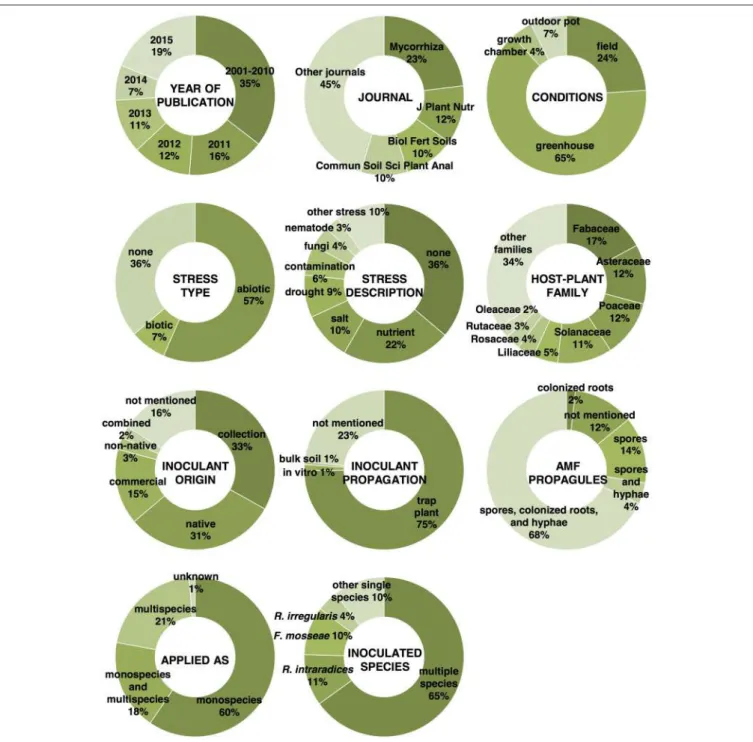
CONCLUDING REMARKS AND PERSPECTIVES
Impact of conservation tillage and organic farming on the diversity of arbuscular mycorrhizal fungi. Soil Biol. Arbuscular mycorrhizal fungi (AMF) are obligate root symbionts that can protect their host plant against biotic stressors such as plant-parasitic nematode (PPN) infection.
ENHANCED PLANT TOLERANCE Higher Nutrient Uptake
They improve plant growth through increased nutrient uptake in exchange for photosynthetic carbon from their host (Smith et al., 2010). The different mechanisms cannot be considered completely independent of each other, and biocontrol is probably due to a combination of different mechanisms (Vierheilig et al., 2008; Cameron et al., 2013).
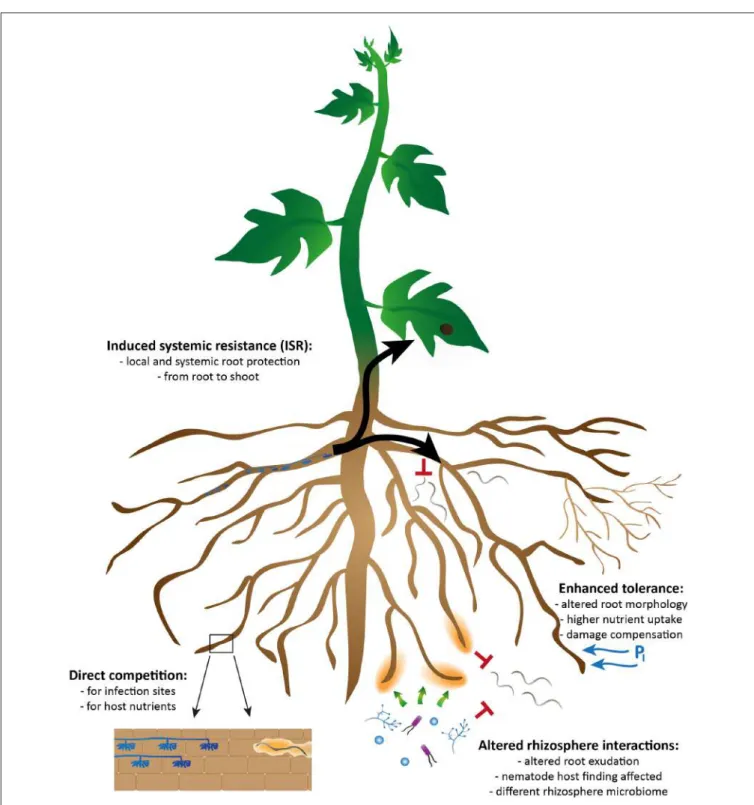
Altered Root Morphology
These observations suggest that the nutrient status of the host plant can affect PPN population density both positively and negatively. However, no firm data are available so far to demonstrate that AMF-enhanced nutrient status is the cause of increased resistance to PPN.
DIRECT COMPETITION FOR NUTRIENTS AND SPACE
For sedentary endoparasitic nematodes, Dos Anjos et al. incognita can negatively affect the sporulation of sweet passionflower AMFScutellospora heterogamain, while Alban et al. 2013) found that prior inoculation of M. exigualed to a significant increase in subsequent AMF colonization compared to non-inoculated mycorrhizal plants.del Mar Alguacil et al.
EFFECTS THROUGH INDUCED SYSTEMIC RESISTANCE
This can be linked to recent reports highlighting the role of ET in the MTI response (Millet et al., 2010). Genes of 5-enolpyruvyl shikimate-3-phosphate synthase (ESPS) and a heat shock protein 70-interacting protein (HIP) were also primed (Hao et al., 2012).
ALTERED RHIZOSPHERE INTERACTIONS
Interactions between an arbuscular mycorrhizal fungus (Scutellospora heterogama) and the root-knot nematode (Meloidogyne incognita) in sweet passion fruit (Passiflora alata). Brazilian Arch. Effects of arbuscular mycorrhizal fungi on plant growth depend on the root system: a meta-analysis. Plant soil.

